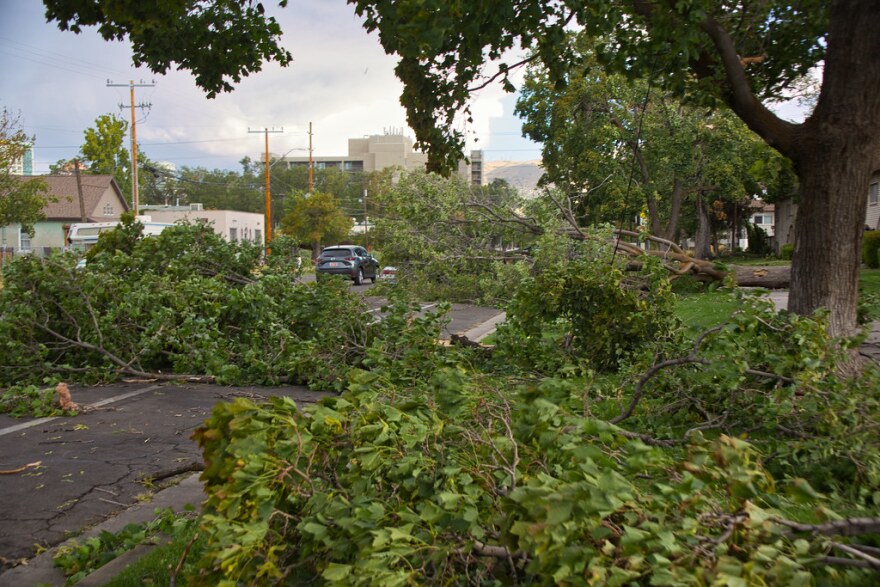A massive windstorm ripped through the Salt Lake Valley nearly one year ago. It toppled more than 1,000 trees and caused hundreds of power outages on Sept. 8, 2020.
Since then, workers have planted hundreds of trees to replace the ones lost and the city plans to finish the effort in November. But the ones they have planted are only six to 10 feet tall so far.
“It’s going to take a long time to replace what was lost in terms of canopy cover, overall esthetics, neighborhood feel,” said Nate Orbock with Salt Lake City’s urban forestry division. “You’ll probably start seeing an impact from a lot of these trees, maybe more on the order of 10 to 20 years. But for full maturity 30 to 40 years.”
Because Salt Lake officials had already spent a year cleaning up from the storm and planting new trees, they now have a year-long backlog of requests to remove dead branches from other ones. That can impact the clearance you have while walking down the sidewalk or standing in your yard, Orbock said.
Jim Steenburgh, an atmospheric sciences professor at the University of Utah, said the wind that came down off the Wasatch Mountains into the valley was not all that unusual. But he said last year’s storm covered more ground and had stronger winds than is typical.
Steenburgh said climate change is linked to some types of extreme weather events, but it’s unclear if this type of windstorm is too.
“I don't know of a study that's really investigated it,” he said. “That's not a reason to not take appropriate measures and plan for the next strong downslope windstorm.”
Steenburgh said it’s not a matter of if there will be another one — it’s when. It’ll just be hard to predict.






